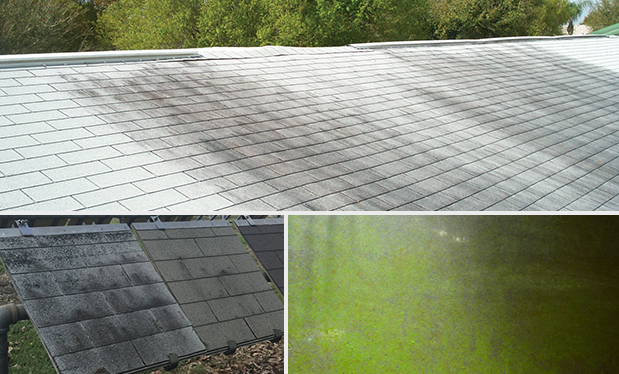Sometimes, selling a job can be easy—your prospect is ready to buy before you even get to the door. But we all know that doesn't happen often enough. More typically, selling a home improvement project is a complicated process. There's a lot to remember. You need to size up your prospect, get a clear sense of what's going on with the house, communicate in a way that has the homeowner agreeing with what you see and put your solution together as a scope of work with a proposal that seems more than worth the price you're asking.
More often than not, you have to ask for the business.
Are in-home sales obsolete?
My company, Certified Contractors Network (CCN), helps residential contractors fine-tune the sales process using our 4P selling system. The 4P selling system is a consultative approach that focuses on the following four key areas:
- Problems/possibilities: What problems does the owner have, or what are possibilities he or she is trying to create?
- Product: What products will solve those problems or create those possibilities?
- People: What people will install those products?
- Price: What is a fair and reasonable price for the work?
One thing that concerns some contractors, whatever selling system they use, is the influx of millennials into the housing market will make virtually any selling system obsolete. They've heard millennials don't have the time or patience to sit through sales presentations and would rather just buy everything online.
And they are absolutely correct. Increasingly, some demographic groups find certain selling styles—such as an arm-twisting, hard close—irritating if not offensive. It's not just the hard close that's a turn off. Someone under 40, or even 45, might easily find the in-home sales process long-winded and pointless. When presenting and selling a home improvement project, it is important to know the differences among generations.
Who's buying
Demographers, who study population trends, classify U.S. demographic groups into generational categories. There's the Silent Generation, born between 1928 and 1945; the Baby Boomers, born between 1946 and 1964; Generation X, born 1965 to 1980; and Millennials, the largest group, now between the ages of 18 and 37 and numbering some 75.4 million.
Each generation is a mixture of race, class and gender. They all share historical experiences that shape a certain outlook and make people predisposed to behave in certain ways. And though you may have a few Silent Generation members among your customers, they're fading. It's the other groups of which to be aware.
For instance, Baby Boomers probably are your largest customer base. They recall when Kennedy was elected president. They remember Martin Luther King Jr. had a dream. They saw a man land on the moon and watched Civil Rights and anti-war protests. They marched and pushed for change. They're service-oriented, interested in preserving relationships and getting results. They have a large and disproportionate share of the nation's wealth.
Generation X is the other current customer group. They came of age when drugs and divorce were prevalent and when cable was introduced. They question authority and don't necessarily follow the rules. This is the generation that started Google, eBay and Yahoo! Generation X people tend to be self-reliant. They're likely to want to work on their own, and they value having a work/life balance.
Millennials are the children of Baby Boomer and Generation X parents. Growing up, they were accustomed to structure and adult supervision. As a group, they've been pampered and praised. They've also been exposed to recessions and a tough job market. This is a generation accustomed to rapidly changing demographics, and they're far more accepting of others not like themselves. Instant communication via mobile devices enables them to feel connected to nearly everyone, so they view the world as a small, highly navigable place.
How differences shape buying
The differences in generational experience are real and will shape the expectations of your prospects in many ways. For instance, Baby Boomers are demanding and inquisitive. They receive their information from traditional media (television and radio). They expect common courtesy and personal integrity from the companies (and people) they hire. Everyone's trying to sell them stuff, so a salesperson has to keep the presentation relevant (meaning stick to facts) and tell the truth. Schmoozing them won't work.
Those in Generation X are street-smart when it comes to marketing. But they often have little sense of financial security and stability, and they don't place as much value on common courtesy. They tend to be less outgoing and friendly. A key, for them, is efficiency.
Millennials are highly educated but often underemployed. Many are paying off student loan debt. They insist on researching a product before they buy it, and they trust what reviews have to say about a company more than family and friends. They rely almost exclusively on online sources. To them, "good service" is an app, and a "close relationship" with a salesperson means communicating via text. Theirs is a group-think mindset—they involve friends and parents in big decisions, so these people need to be included in the decision-making process.
Millennial myth
Yes, millennials are different. To sell to them, you have to be available to them during their research phase and provide consumable data via websites. They don't want to feel bombarded with information or pressured into making an agreement before they're sure about the decision. They want a faster, smoother customer experience that incorporates technology and information.
But how many millennials are we selling to now? In a 2016 survey of this age group conducted by the Joint Center for Housing Studies of Harvard University, 61 percent concede they can't afford to buy a house. Actually, they're entering the housing market at a much lower rate than their predecessors did. At the moment, millennials generate about 3 percent of home improvement spending, and 90 percent of your customers are likely to be Baby Boomers and Gen X individuals.
What's clear is that when looking at the ways millennials buy and the rate at which they're entering the home improvement marketplace, you have about five to 10 years to tweak the sales process so it's fully adapted to the way this age group thinks and buys.
Consultative approach
That said, why adjust or change the sales process now?
The reason is simple: Millennials may not be today's buyers, but other generations are starting to follow their lead. They want information from an authentic expert, and they're put off by hard-sell techniques.
In terms of using a sales process that works with homeowners, what's more important than the generational differences is what these groups have in common. Why create multiple selling systems when experience demonstrates people in every demographic group want to deal with a company and a salesperson who are knowledgeable and can help them solve whatever problem they're experiencing?
This is why our sales process works well for all these generations. It's a consultative sales approach that aims to build relationships with homeowners.
Why it works
Generally speaking, many contractors sell using one of two styles. There's the bidder style, where the salesperson does little or no sales presentation and instead communicates he or she is nice, the product is great, the company is great and the price is great. Chances are the only time these people get jobs is when they have the lowest price or no one else submits bids.
The other style is the schmoozer. This person sells based on personality and thinks he or she can sell anything to anyone using the same canned presentation. And this may be effective because of his or her assertive or charming personality. But you have to get lucky to find someone who can effectively sell like this. In addition, you can't build a great sales team by duplicating someone's personality.
Note that neither of these styles uses a closing strategy. So when people selling in these ways get pushed back, they drop price, knock the competition or leave without the sale, thinking they're going to get the project at some point in the future.
The consultative approach is about planning your whole sales process from start to finish. Here's the great thing: It doesn't matter what generation of homeowner you are selling a project to, it works. Generation X never believes anything, so you have to create trust and confidence. Baby Boomers want a relationship, but they also want all the facts without a high-pressure close.
These days, it doesn't matter who you're selling to. You have to have technical skills, do your research and be the expert.
The consultative sales process is a method of closing business that begins with a measure call and follows up with a well-researched proposal and lets owners feel comfortable they made the right decision—no matter their generation.
Scott Siegal is president of CCN, Takoma Park, Md.



